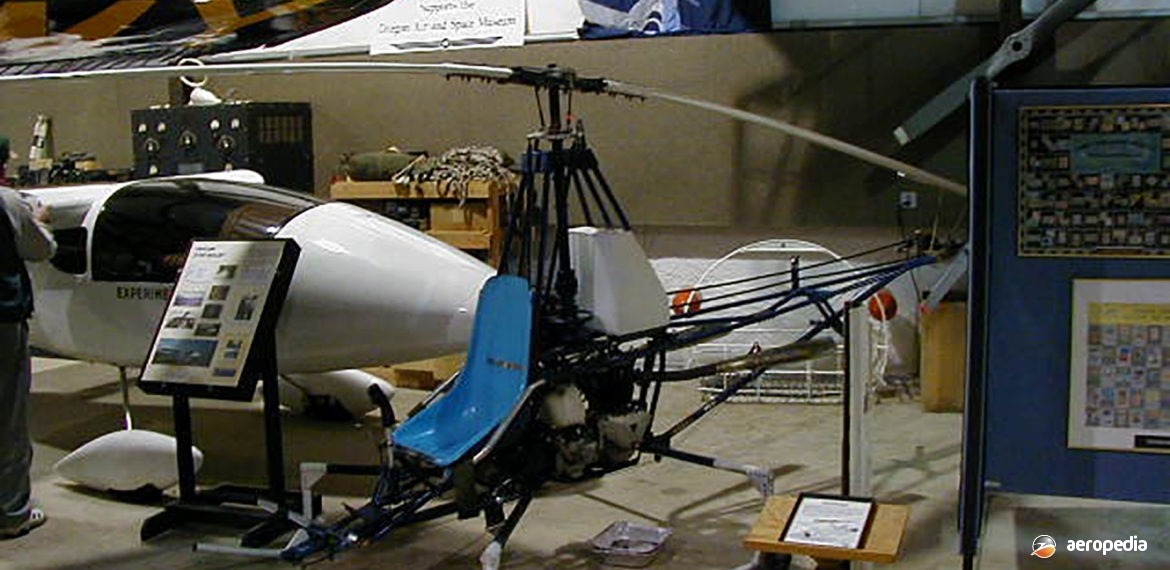Photograph:
Adams Wilson XH-1 Hobbycopter Prototype at the Oregon Air & Space Museum, USA (David C Eyre)
Country of origin:
United States of America
Description:
Single-seat light sport helicopter
Power Plant:
One 37 kw (50 hp) Rotax 503 two-cylinder, two-stroke, fan-cooled engine
Specifications:
- Length: 4.57 m (15 ft)
- Main rotor diameter: 6.55 m (21 ft 6 in)
- Height: 1.83 m (6 ft)
- Main rotor area: 34 m² (363 sq ft)
- Tail rotor diameter: 0.94 m (3 ft)
- Max speed: 136 km/h (85 mph)
- Cruising speed: 105 km/h (65 mph)
- Service ceiling: 2,590 m (8,500 ft)
- Rate of climb: 290 m/min (950 ft/min)
- Empty weight: 136 kg (300 lb)
- Loaded weight: 183 kg (600 lb)
History:
In the 1950s Messrs T G Adams and Paul Wilson in California, USA designed and developed a single-seat light sport helicopter for private use. After a prototype was completed and tested, they produced plans for construction of the machine, then known as the Adams Wilson Hobbycopter, for sale to amateur constructors. It also became known as the Choppy. The prototype (N23P) first flew in November 1958 and had a 25 kw (34 hp) converted Triumph engine. It was also known as the XH-1.
More than 100 sets of plans were sold. Early models had an open framework. When sold as a kit it was known as the Model 101 Hobbycopter, and subsequently the Model 102 appeared with a strengthened structure, a 37 kw (50 hp) Triumph engine and a fibreglass cockpit shell.
Examples have been built using converted motor cycle engines, including the Triumph 650 cc four stroke of 34 kw (46 hp). The rotor was a two-blade unit of solid spruce construction with the cyclic and collective pitches controlled by a swash-plate. The engine drove the main rotor via a gearbox and was chain driven, the gearbox to the main rotor being by a direct shaft, the tail rotor being operated by a belt drive.
The AW-95 was a variant of the original design produced in 1995 and was a modified up-graded variant produced by Mr Douglas Schwochert of Wisconsin. It was a single-seat light helicopter with an open framework, the tail rotor being driven by belts. It had a skid undercarriage and a fibreglass cowling around the cockpit with a perspex cockpit windscreen. It was fitted with a two-cylinder, two-stroke, 500 cc Rotax engine.
New plans for the design were produced and at the time met US FAA restrictions with an empty weight of 115 kg (254 lb). They have been made available by Vortec International.
An example has been completed in New Zealand by Mr Alfred Crowe and, as the empty weight restriction of the FAA was not applicable, this ws fitted with a more powerful converted Johnson outboard engine, which was a liquid-cooled two-stroke unit providing 90 kw (120 hp). This machine had alloy rotor blades made by Rotor Hawk.

